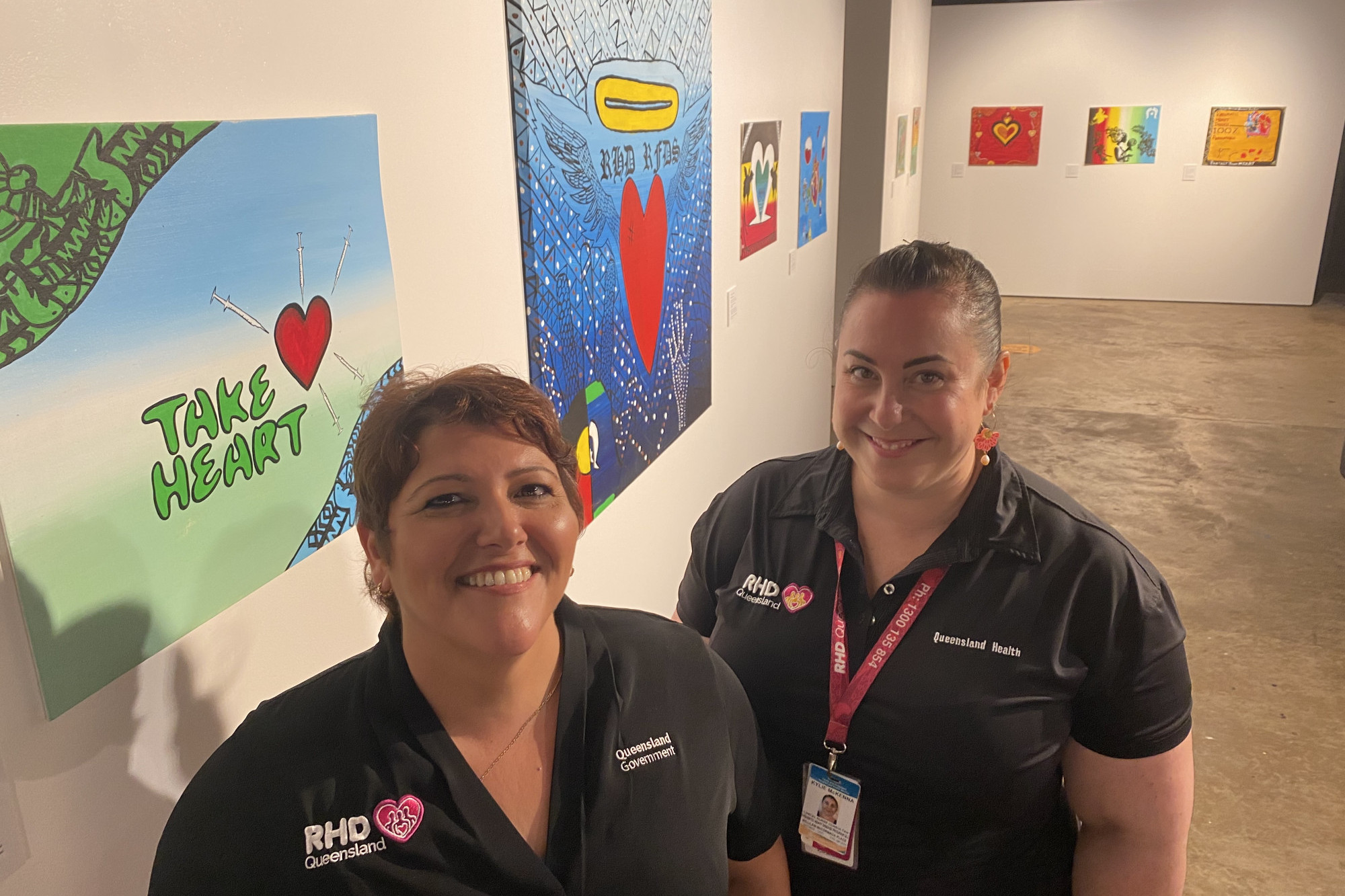Community
1 March, 2021
Taking heart against chronic disease
ARTWORK by detainees of northern Queensland correctional facilities reflecting the experiences of those with heart disease, is currently touring the Far North.

The HeART Project is a unique collaboration between the Queensland Rheumatic Heart Disease Program, and correctional facilities across northern Queensland.
Cairns based RHD project officer Laurette Lubbers said the HeART Project was a grass-roots health promotion activity, directly from people living with Acute Rheumatic Fever (ARF) and Rheumatic Heart Disease (RHD).
ARF is the body’s response to an untreated streptococcal infection. RHD is the resultant damage from ARF to one or more heart valves, causing them to malfunction.
To avoid further episodes of ARF, up to four weekly Penicillin injections are required. These injections are painful but are needed for at least five years and sometimes for life.
RHD can lead to permanent disability and sometimes death, if not managed properly.
“Through their art, prisoners share personal stories and educate others about the seriousness of ARF and RHD,” Ms Lubbers said.
“The RHD Program staff based in Townsville found that some young residents with ARF and RHD at youth and detention centres were refusing the required treatment with penicillin injections.
“Some believed that it was not needed whilst being detained. “
Clinical nurse consultant Georgina Hughes said after unsuccessful attempts to engage the group about the importance of regular Penicillin injections, the team developed the artistic activities to put education back into the hands of patients.
“The patients created paintings based on their experience with, and understanding of, the disease,” she said.
The artwork includes a range of themes such as surgery and the impact of RHD on pregnancy.
Many of the pieces are painted in traditional Aboriginal, Torres Strait and Papua New Guinean colours to demonstrate the wide burden of disease in the artists’ communities.
“The process was more valuable than initially anticipated,” Ms Lubbers said.
“Through their art and personal stories, young people encouraged their peers to seek medical assistance and receive their treatment while residing in correctional facilities.
“The shame factor associated with continuing medical care was minimised, and even people who did not have ARF/RHD started requesting health checks and to be checked for heart murmurs.
“The adults also shared stories, about how chronic heart disease had affected their families, and that in communities with high rates of the disease some people have come to believe that premature death with RHD is normal.”
Once all exhibitions have been held, each art piece will be donated to a health or community organisation of the artist’s choice.
The HeART Project has already exhibited in Cairns and Yarrabah, and will be appearing at Innisfail Library and Council Foyer from March 2 to 19, Atherton Library from March 23 to April 9, and Douglas Shire Council Chambers from May 3 to 14.
For up-to-date time and venue details visit the events page at www.RHDaustralia.org.au


